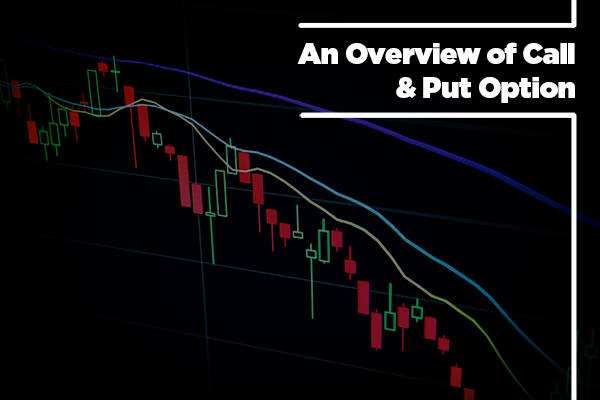Introduction
A true trader should never stop looking for new chances even if it is something outside your comfort zone. As a novice, you have probably heard the terms ‘options trading’ and its corresponding terms including call and put option. If you have started in the more common stock or forex trading, you will surely find the differences in the options trading a bit daunting but also highly rewarding.
Having an in-depth overview of options trading in general and call and put options, in particular, will open the door to new approaches and methods of trading. Let’s take a look at what the call and put options are all about and how you can utilize them as part of your trading systems for consistent flows of profits.
Call and Put Option Explained
Options trading is generally regarded as a more adaptable form of trading than some other financial markets including stock trading and forex trading. At first glance, options trading offers traders flexible approaches and methods of investing with adjustable time frames and personalizable risk management. As a result, it is also proven to be far more intimidating to approach for fresh beginners than the rest.
Options are derivative contracts indicating no specific value on their own but that of the underlying assets, including stocks, currencies, commodities, and so on. With these contracts, the amount of time spent on your trades is significantly reduced and the trade results are more responsive to your adjustments, making options trading highly popular among traders who trade on a short period basis.
The Differences Between Call and Put Option
Simply put, a call option gives the buyer to buy while a put option gives the buyer to sell, both are without obligation, an underlying asset at a specific price (also known as the strike price) within a time period before the expiration date. In whichever case, the option sellers are obligated to either sell or buy the asset should the buyers exercise their option. The costs of these contracts are known as premiums.
The use of call options indicates the bullish expectation of the market whereas put options are bearish so that the stockholders may benefit from the downwards price movements of the underlying assets.

As the option buyer, if you positively expect the price of a stock to rise above the strike price, you can make a bet by buying that call contract, exercise the option, and then sell them right away for immediate profits.
On the other hand, if you think that the value of the stock has the tendency to go down, you may want to buy a put option so that you can sell the shares at a strike price that is possibly higher than the spot price – the current value of the stock in the market – and earn a profit out of the price difference. This amount does not include the amount you paid for the option premium.
However, it is the most ideal situation and not always guaranteed to happen due to the volatility of the market. If the stock price manages to plateau out or even rise up, you should let the option expire worthless not to lose any possible opportunity coming.
Call and Put Options examples:
Call Option Example
There is an investor who buys a call option for 100 shares of the underlying stock with the strike price of $10 and a premium of 100$. On the day the option expires, the stock hits $20 each. The investor then exercises his option to purchase those 100 shares for $10 each (the strike price of the option) and immediately sell them for the current price of the market which is $20.
The investor receives $2,000 (100 shares with $20 each) from the later transaction selling the shares and pays $1,000 (100 shares with $10 each) for the writer. This amount does not include the $100 premium also paid to the writer as obligated in the contract. The investor earns a net profit of $900, which makes the transaction a total win, costing him only $100 for the premium.
Put Option Example
The stock price of a company is expected to take a downtrend in the next few months. The investor wants to buy a put option for 100 shares of the underlying stock with the strike price the same as the spot price of $10 and the premium of $100.
Later, the stock price hits $5 and he decides to exercise the option, purchasing $500 worth of stock (100 shares with $5 each). He then immediately sells them using the option for $1,000 (100 shares with $10 each). The investor now makes a net profit of $400 ($500 excluding the amount of premium of $100) for this transaction with only the cost of the premium paid.
Alternatively, if the stock price manages to stay the same at the strike price or even bounce back, there is no reason why for you to exercise the option. It is recommended that you just leave it expired worthless and take the loss equal to the premium paid to the option writer.

How to Trade With Call and Put Option
Investors primarily use call and put options to hedge and keep the possible risk out of their current investments. A stockholder can use his own shares as the underlying assets for buying or selling options to hedge his direct investment. These options are meant for compensating any losses that occurred from the underlying assets themselves or can be used as standalone speculative investments.
Selling Calls or Puts
In a downtrend of the market, investors may benefit from the decreasing price value by selling both call and put options. In such a situation, the benefit of the writer is limited to the option premium whereas the option buyer is offered unlimited profitability and just a small limited drawback – the potential loss equal to the premium paid. If the market price of the underlying asset falls below the strike price, the put buyer profits thanks to the difference between the two values.
Buying Calls or Selling Puts
When aiming for speculation, investors should buy or sell call and put options if they positively expect an upward trend from the stock price. As the call buyer, you are subjected to the risk that is limitedly equal to the premium paid for the option while the potential return is, theoretically, unlimited depending on how high the market price can possibly reach.
In contrast, the whole situation is reversed for a put seller. His potential profit is limited to the premium paid by the buyer while the loss is limitless and equal to the amount by which the market price is less than the option strike price multiplied by the number of options sold.
Buying Puts
In a bear market where everything is going downhill and the investor believes a specific stock will drop in price but still does not want to get rid of that position just yet, he can buy a put option for that underlying asset. If the situation gets worse, the profit from the contract will partially compensate for the loss from the stock.
Conclusion
By having a general understanding of how options work, you are on your first step toward becoming a true option trader targeting more consistent flows of trading income in addition to the current ones. Make sure you check out the guide on call and put option trading strategies.



